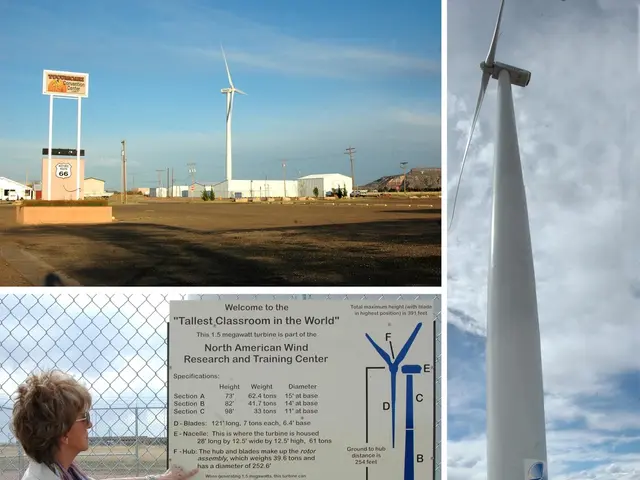Third quarter performance of Nvidia, the microchip manufacturer: a look at their financial results
Nvidia, the leading artificial intelligence (AI) company and a top performer among investors, has released its Q3 earnings for the fiscal year 2026 second quarter. The company's share price has gained an impressive 196% over the last 12 months, reaching new heights. However, the current outlook for Nvidia's share price is cautiously optimistic but mixed with concerns related to anticipated supply challenges for its next-generation GPU, Blackwell.
Nvidia's Q3 earnings beat expectations, with revenue increasing 94% year-on-year to $35.08 billion. Earnings per share more than doubled to $0.81. The strong performance was due in part to resumed chip sales in China and robust demand in AI data centers. Nvidia controls about 90% of the data center GPU market, and AI-related spending by big tech remains strong, supporting a bullish near-term outlook.
Analysts generally expect continued strong growth driven by Nvidia's dominance in AI and data center GPUs. Among 65 analysts, 58 recommend buying Nvidia shares, with a consensus 12-month price target around $185.18 (slightly above current price), but individual targets range up to $250. A cautious benchmark from 24/7 Wall St. gives a price target near $176.64, incorporating risks like tariff issues, competition, and Blackwell GPU supply constraints.
The Blackwell GPU series, Nvidia's next-gen AI-focused chips, faces anticipated supply constraints that could temper near-term growth and contribute to volatility in the share price. While Nvidia’s leadership in GPU tech is dominant, these supply risks create caution for investors considering timing.
Despite supply and geopolitical uncertainties, Nvidia’s AI accelerator market share (around 80%) and strong software ecosystem (CUDA platform) provide a powerful growth moat. Bullish projections for 2030 envision Nvidia shares potentially reaching around $491 per share under optimistic AI adoption and market expansion scenarios, assuming gross margins stay strong and automotive/autonomy revenue grows robustly.
However, the ongoing trade war with China and potential US sanctions against AI-ready chip exports to the country could hamper Nvidia's growth. Additionally, Blackwell GPUs have been prone to overheating when connected to each other on the server racks Nvidia has repeatedly redesigned for the chip. A further redesign could slow GPU shipments and delay the opening of new data centres for Nvidia's big tech customers.
In summary, Nvidia’s Q3 earnings release strengthens the bullish case with potential upside surprises due to resumed China sales and sustained AI demand, but investors should weigh the near-term risk of Blackwell GPU supply bottlenecks and geopolitical factors. The stock is considered a buy for growth-focused investors but with some volatility expected in the near term. Nvidia's next earnings release is expected to be approximately three months after the latest release.
Investing in Nvidia's stock-market performance is influenced by the company's quarterly earnings, with the latest Q3 earnings beat expectations and indicate continued growth in finance. The company's success in the AI and data center GPU market, alongside robust demand, supports a bullish near-term outlook; however, anticipation of supply challenges for Blackwell GPUs and geopolitical uncertainties could result in volatility in the near term.




